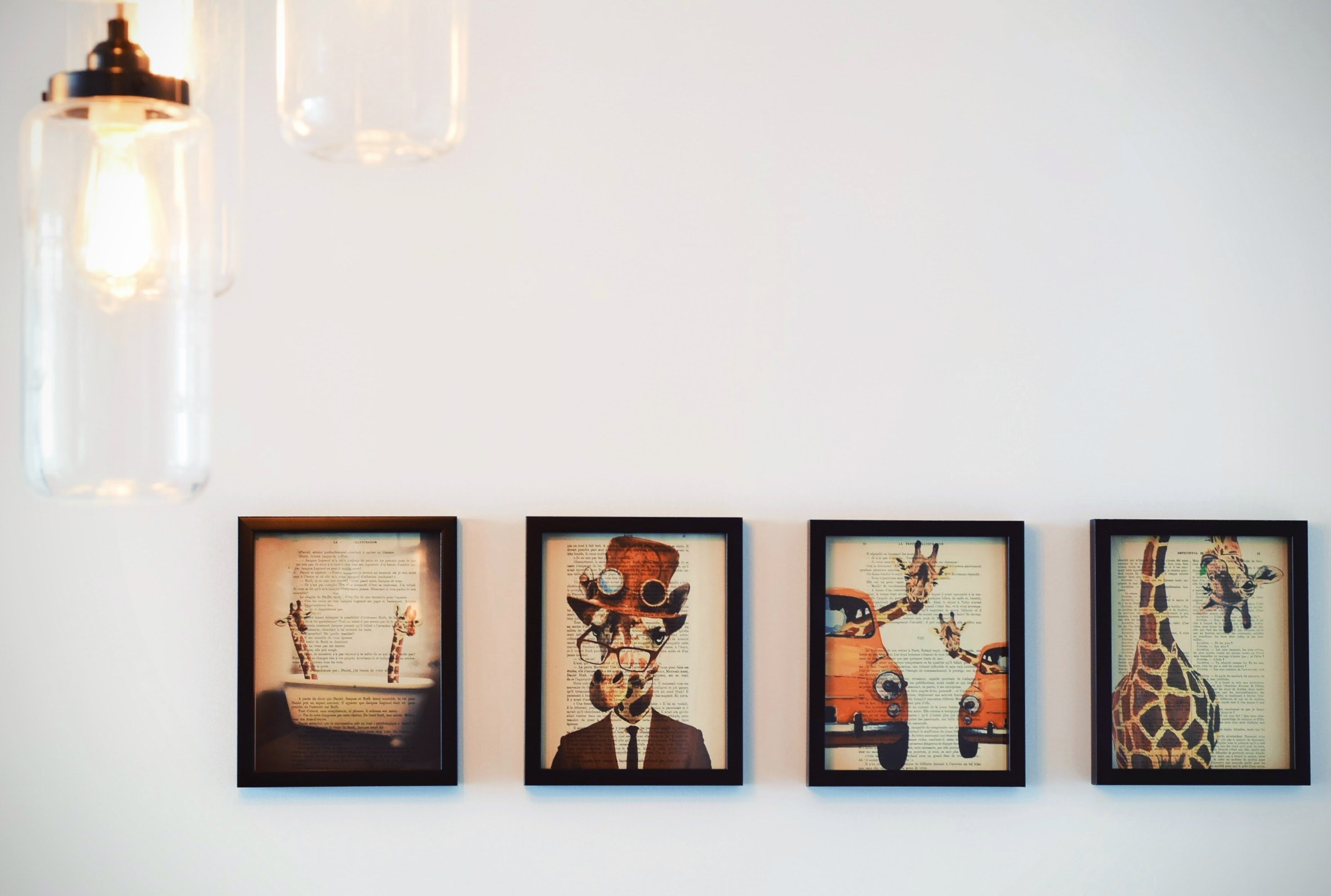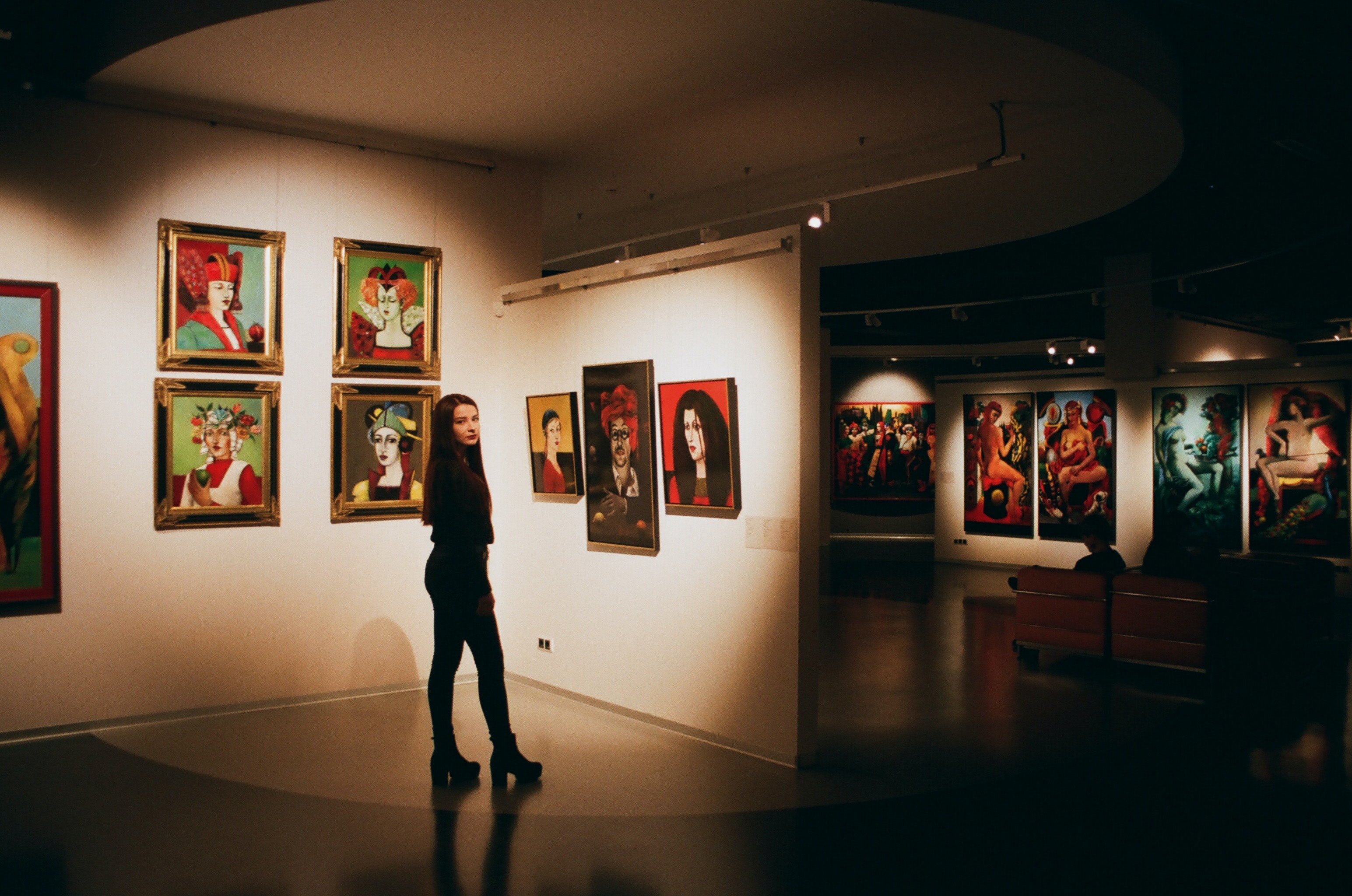Table of Contents
- Introduction to Art Exhibitions
- Importance of Art Exhibitions for Artists
- Different Types of Art Exhibitions
- How to Successfully Promote Your Art Exhibition
- Essential Things to Consider When Planning an Art Exhibition
- How Your Customers Can Book Your Art Exhibition Directly from Your Portfoliobox Website
- The role of Portfoliobox in Promoting and Organizing Art Exhibitions
- The Future of Art Exhibitions: Trends and Predictions
- Conclusion
Art holds a mirror up to society, showing us the world through a different lens. It has the power to move, inspire, and provoke thought, and it is art exhibitions that provide an essential platform for these interactions to take place. This guide will offer a comprehensive understanding of art exhibitions, why they hold great importance for artists, the various types available, and how to use platforms like Portfoliobox to promote and organize these events.

Introduction to Art Exhibitions
Art exhibitions are curated events where art pieces are displayed for public viewing. These exhibitions can include various forms of art, such as paintings, sculptures, installations, or digital art. They provide a platform for artists to share their work with the public, and for the audience, they serve as an opportunity to engage with art in a direct and meaningful way.
An art exhibition can be a solo event exhibiting the work of a single artist or a group exhibition showcasing the works of several artists. These events can take place in a variety of venues, from established art galleries and museums to pop-up spaces and online platforms. They can be thematic, focusing on a particular subject, style, or concept, or they can be retrospective, showcasing the evolving work of an artist over the years.
Exhibitions play a crucial role in the artistic community, serving as an essential link between artists, curators, critics, collectors, and art enthusiasts. They offer artists the chance to gain exposure, sell their work, receive critical feedback, and engage with their audience, making them a pivotal part of an artist's career.

Importance of Art Exhibitions for Artists
Art exhibitions serve as a significant stepping stone for artists, helping them establish their presence in the art world. They offer artists a platform to display their work, gain recognition, and create a dialogue around their creations. Through exhibitions, artists can not only reach a wider audience but also connect with fellow artists, curators, and potential buyers, thereby expanding their network.
Apart from the exposure and networking opportunities, exhibitions also provide artists with a chance to receive critical feedback on their work. This feedback, coming from both the audience and art critics, can prove invaluable in an artist’s growth and development. It can help them understand how their work is perceived, what resonates with the audience, and what aspects they can improve further.
Exhibitions also offer artists the opportunity to sell their work. For many artists, especially emerging ones, this can provide a crucial source of income. Even if a piece doesn’t sell, exhibiting it can increase its value, making it a worthwhile investment for the artist.

Different Types of Art Exhibitions
Art exhibitions come in various forms, each with its distinct characteristics. Understanding these types can help artists decide which format best suits their work and career goals.
Solo exhibitions are dedicated to showcasing the work of a single artist. These exhibitions can offer a comprehensive look at the artist's body of work, allowing the audience to fully experience their artistic vision. From an artist's perspective, solo exhibitions can be a significant milestone, signaling recognition and acceptance in the art community.
Group exhibitions feature works from multiple artists, often tied together by a theme or concept. These exhibitions can be a great way for emerging artists to gain exposure, as they attract a diverse audience. They also provide opportunities for artists to network and collaborate with other artists.
Juried exhibitions are another common type of art exhibition. In these events, artworks are selected by a panel of jurors, usually esteemed figures in the art world. Being selected for a juried exhibition can greatly boost an artist's profile, as it signals that their work has been recognized by industry professionals.
How to Successfully Promote Your Art Exhibition
Promoting an art exhibition is as crucial as curating it. Effective promotion can help attract a larger audience, generate buzz around the event, and increase the chances of selling the artworks. Here are some strategies on how to promote your art exhibition effectively.
Firstly, leveraging social media is crucial. Platforms like Instagram, Facebook, and Twitter can help spread the word about the exhibition to a large audience. Artists can share sneak peeks of their work, behind-the-scenes footage, and event details to generate excitement and engagement.
Press releases are another important promotional tool. They can help get the exhibition featured in local news outlets, art blogs, and magazines, reaching a larger and potentially more diverse audience.
Collaborating with influencers and bloggers in the art industry can also be beneficial. They can help amplify the reach of the exhibition by sharing it with their followers, who are likely to be interested in art.
Essential Things to Consider When Planning an Art Exhibition
Planning an art exhibition requires careful consideration of various factors. These include selecting the right venue, curating the artworks, planning the layout, and promoting the event.
Choosing the right venue is crucial. The space should align with the aesthetic of the artworks and be easily accessible to the target audience. Whether it's a traditional art gallery, a pop-up space, or an online platform, the venue can greatly impact the success of the exhibition.
Curating the artworks is another important aspect. The selection of artworks should reflect the theme or concept of the exhibition and showcase a coherent body of work. This requires a keen understanding of the artist's vision and the audience's interests.
The layout of the exhibition also needs careful planning. The arrangement of artworks should facilitate a smooth flow of movement and ensure that each piece gets the attention it deserves. Factors like lighting, spacing, and sequencing can greatly influence the viewer's experience.
How Your Customers Can Book Your Art Exhibition Directly from Your Portfoliobox Website
Creating a seamless booking process for your art exhibition is a breeze with Portfoliobox. Whether you're an artist, gallery owner, or curator, you can offer your customers the convenience of reserving their spot at your exhibition with just a few clicks. Here's how to set it up:
Create a booking:
- Click on 'Your Libraries' in your Portfoliobox admin panel.
- Select 'Bookings' from the menu.
- Click on 'Add New Booking Service.'
- Fill in the event information, including the title, price, and the number of available seats.
- If applicable, set up alternatives to offer multiple date and time options for the same event, like different exhibition openings or guided tours.
Booking Alternatives is a powerful feature in the Portfoliobox booking system that simplifies the reservation process for both you and your customers. Here's how it works:
Key Features:
- Create Multiple Options: You can add as many alternatives as needed for your event, each with its own title, description, price, and the number of available seats. This flexibility allows you to cater to various preferences and schedules.
- Customize Titles and Descriptions: Tailor the title and description for each alternative to provide specific details about what makes each option unique. This helps customers choose the right time or experience that suits them best.
- Set Individual Prices: With the ability to set different prices for each alternative, you can offer tiered pricing or special deals. This makes your art exhibition accessible to a broader audience.
- Manage Availability: Define the available seats for each alternative, ensuring that you don't overbook and providing customers with clear availability information. This feature prevents overbooking and ensures a seamless experience for your visitors.
Setting up booking alternatives is as straightforward as creating a booking service:
Create a booking alternative:
- Access your Portfoliobox admin panel and click on 'Your Libraries.'
- Choose 'Bookings' from the menu.
- Select an existing booking or create a new one.
- Click on 'Add New Alternative.'
- Fill in the information for each alternative, including the title, description, price, and the number of available seats.
- Click 'Save New Alternative' to finalize your options.
With Portfoliobox, you can effortlessly manage bookings and provide a convenient way for your customers to secure their spots at your art exhibition. The flexibility of booking alternatives ensures that everyone can find a suitable date and time to explore your art, enhancing the overall visitor experience. Start utilizing this feature and offer a hassle-free booking process that helps you engage with art enthusiasts and showcase your creativity.

The role of Portfoliobox in Promoting and Organizing Art Exhibitions
Portfoliobox is a powerful tool for artists, helping them promote and organize their art exhibitions. By providing a user-friendly platform to showcase their work, Portfoliobox makes it easy for artists to reach a global audience.
The platform allows artists to create a professional portfolio website where they can display their artworks, share their artist statement, and provide details about upcoming exhibitions. With its integrated booking system, Portfoliobox simplifies the process of organizing exhibitions, allowing artists to manage bookings directly from their website.
In terms of promotion, Portfoliobox offers various features to help artists spread the word about their exhibitions. They can share updates and news through their website, send newsletters to their followers, and link their social media accounts to their website, thereby amplifying their reach.
The Future of Art Exhibitions: Trends and Predictions
The world of art exhibitions is constantly evolving, with new trends and technologies shaping its future. One of the major trends is the rise of online exhibitions. With the advent of virtual reality and 3D imaging technologies, online exhibitions are becoming increasingly immersive, offering a novel way for audiences to engage with art.
Another trend is the growing emphasis on inclusivity and diversity in art exhibitions. Curators are making conscious efforts to showcase works from artists of various backgrounds, cultures, and perspectives, thereby enriching the art discourse.
Sustainability is another key trend shaping the future of art exhibitions. From eco-friendly exhibition designs to digital catalogs, the art world is making strides towards reducing its environmental impact.
Conclusion
Art exhibitions play a pivotal role in the art community, offering a platform for artists to share their work, gain recognition, and engage with their audience. With the advent of digital platforms like Portfoliobox, organizing and promoting art exhibitions has become more accessible than ever. As we look to the future, it's clear that art exhibitions will continue to evolve, embracing new trends and technologies to enrich our engagement with art.












